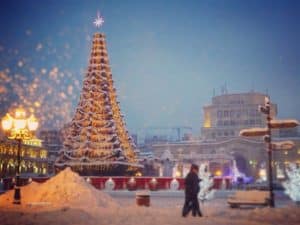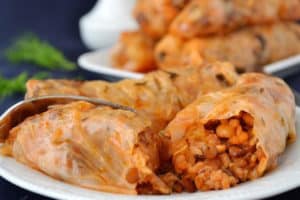Armenians are one of the most ancient peoples of the world. And the celebration of the New Year among Armenians also has too many traditions.
According to some Armenian ethnographers, the New Year in the Armenian tradition is a symbol of the renewal and rethinking of the past. The ancient Armenians had a very interesting and thoughtful cycle of New Year’s customs and beliefs, some of which are still preserved in Armenian villages.
 The new year was considered and is considered an opportunity to start all over again, to rethink the mistakes made and to try to avoid them in the future, leaving all the bad things in the old year.
The new year was considered and is considered an opportunity to start all over again, to rethink the mistakes made and to try to avoid them in the future, leaving all the bad things in the old year.
Since ancient times, on New Year’s Eve, Armenian families lit a fire around which family members gathered. The meaning of this tradition was “giving” all bad memories, mistakes to the fire and receiving heat and light from the fire so that the next year would be brighter and warmer.
In addition, the Armenians seemed to have a cult of water: on New Year Eve, Armenian girls hurried to the river, lake or whatever watery is near them, and threw a piece of traditional Armenian New Year bread “Tarehats” or a handful of grain, as if to bless water.
Since ancient times, on the first day of the year, the head of the family gave gifts to all the family members. Family members also exchanged gifts. Children hung their stockings in anticipation that at night they would be filled with goodies and various sweets. Later, gifts began to decorate the festive tree.
The girls read fortune: they put an egg in a plate with ashes and colours, and if in the next morning they found out colours more than ashes on the shell, then it was going to be their year. It was a custom to dress up a domestic animal (mostly cattle) and in the morning take it out to the yard. If it crossed the barn with its right leg, congratulation, it is going to be a fantastic year!

The head of the family raised the first glass, blessed the table, congratulating the family on the New Year, and offered everyone to taste the honey so that there would be many sweet days in the coming year.
Only sweet words were allowed to be spoken. There was always baked bread on the tables during New Year – “gata”, “Tari Hats”. The bread was decorated with animal figures or, later, with small figures of temples. Bread personified a request to the pagan gods to send a fertile year.
One cannot imagine Armenian New Year table without wheat bread. Armenian women put a coin or something like it in the bread. Then the bread was divided into several parts and the family members hurried to take a piece of it hoping to find the coin. A good year was waiting for the one who would find the coin in his/her piece of bread/sweet bread.
It is interesting to mention that in ancient Armenia there was a widespread tradition of hanging knitted socks to the “yerdik” (a type of chimney) in which gifts were put. Many nations of the West have a similar tradition.
 As for the Armenian New Year dishes, we should mention that one of the oldest dishes, existing in the pre-Christian era, is considered to be Pasuts Dolma (lean cabbage).
As for the Armenian New Year dishes, we should mention that one of the oldest dishes, existing in the pre-Christian era, is considered to be Pasuts Dolma (lean cabbage).
Traditionally, Armenian New Year dishes were also “Anush Apur” (soup with dried fruits) and “Ghapama” (pumpkin stuffed with rice, honey, nuts, dried fruits).
All the dishes which were served, necessarily had something in common, emphasizing national characteristics of Armenians. The central place was necessarily occupied by round wheat, which was grown exclusively in Armenia.
Now a lot has changed in the celebration of the New Year by Armenians. But so far, the New Year with Armenians remains the most fun, beloved and family holiday, which is usually celebrated at home, with huge tables and too many guests.
